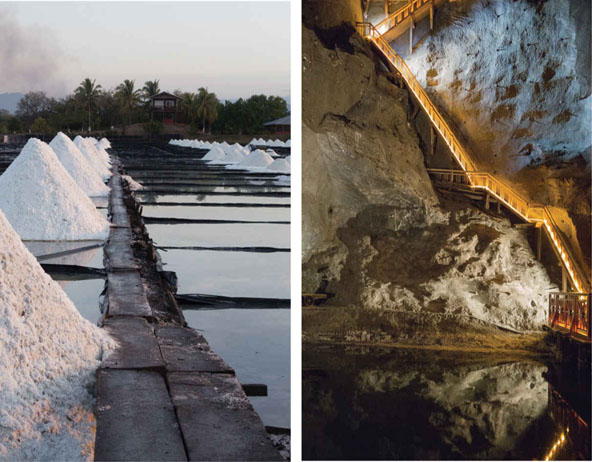Salt- The Food that Time Forgot
Posted On: 06/16/2017 - Viewed: 47096
For thousands of years we have been making salt from the sea or finding it in the land, and the world’s thousands of regional cuisines have evolved in concert with the availability and character of regionally made salts. For most of human existence, salt has been scarce in the extreme, difficult to transport, and of dramatically varying quality. Salt was, literally, a treasure, and everyone everywhere who could make it would.
Yet salt making was a challenging, physically demanding, risky job requiring the participation of an entire community. The salts that resulted were unique, each bearing a mineral and crystalline imprint of the elemental and human forces that wrought it. Salt was a natural, whole food, intimately tied to a place and a way of life.
When industrial methods of manufacturing and transporting salt emerged out of the technology and trade boom of the mid-nineteenth century, the uniqueness of salt began to be lost. Salt is now standardized, found mostly in three or four variously-colored, rather hefty cardboard boxes in the middle of supermarkets so vast that potato chips and cat food have whole aisles to themselves. Salt has a small slice of a shelf, and the salts on that shelf are all variations of the two basic refined salts produced by giant chemical companies: vacuum pan salt and industrial sea salt. Over the last century, salt has become commonplace. Most people have come to consume it routinely and indiscriminately, while paradoxically they have stopped thinking much about it at all.
That has begun to change. The organic food movement that has swept much of the Western world since the 1980s has caused us to think more about how our food is produced: What is the environmental cost of producing and transporting food? How are we treating food plants and animals? How are we treating farmers? What is the nutritional value of our food? All of these ideas and a host of others cannot be contained in the single concept, “health food.” They have spilled over, and many people are now engaged in a far-reaching dialogue with their eating habits. All of this has helped shaped and inspire a modern version of what might have been the first is epicurean question mankind ever asked: What tastes best, and how can I make it taste better?
Thanks to an increasingly sophisticated understanding of how to use salt well in cooking, its use today is expanding into foods formerly off limits. For example, fleur de sel camamels are sold in virtually every gourmet food store in the Western world. The combination has won over sweet-eaters and savory eaters alike. Rare is the person who, after tasting salt in caramel, prefers it without. (The delicious- if less universally enjoyed- combination of salt and chocolate is also gaining popularity.) Salted caramel originated, artisan-made salts produced in the region- is sprinkled into the caramel in such a way as to keep the salt crystals from dissolving.
If the salt were simply dissolved in cream before being combined with the burnt sugar, its deeper power would be lost. Instead of just salting to season, such salting is inspired by the salt itself- crystals, minerals, moisture, even the salt’s own name- to result in a food that is greater than the sum of its parts. This subtle difference marks a shift toward thinking of salt as a strategic ingredient. Cooks are asking questions: What do you want salt to achieve for the dish? What salt will do this job best? How shall the salt be used?
In this environment, all-natural salts are staging an extraordinary come-back. While it might be an exaggeration to generalize that artisan salt makers are regaining ground lost to industrial salt manufactures, there are actually scattered small communities or regions where artisan salt making is reviving. It’s possible again to find a variety of hand-crafted salts.
We have the purest salt on Earth available on https://himalayansaltusa.com/gourmet-salt
Salted- A manifesto on the world’s most essential mineral, with recipes- Mark Bitterman (Page 5-7)
Related News
Other News
